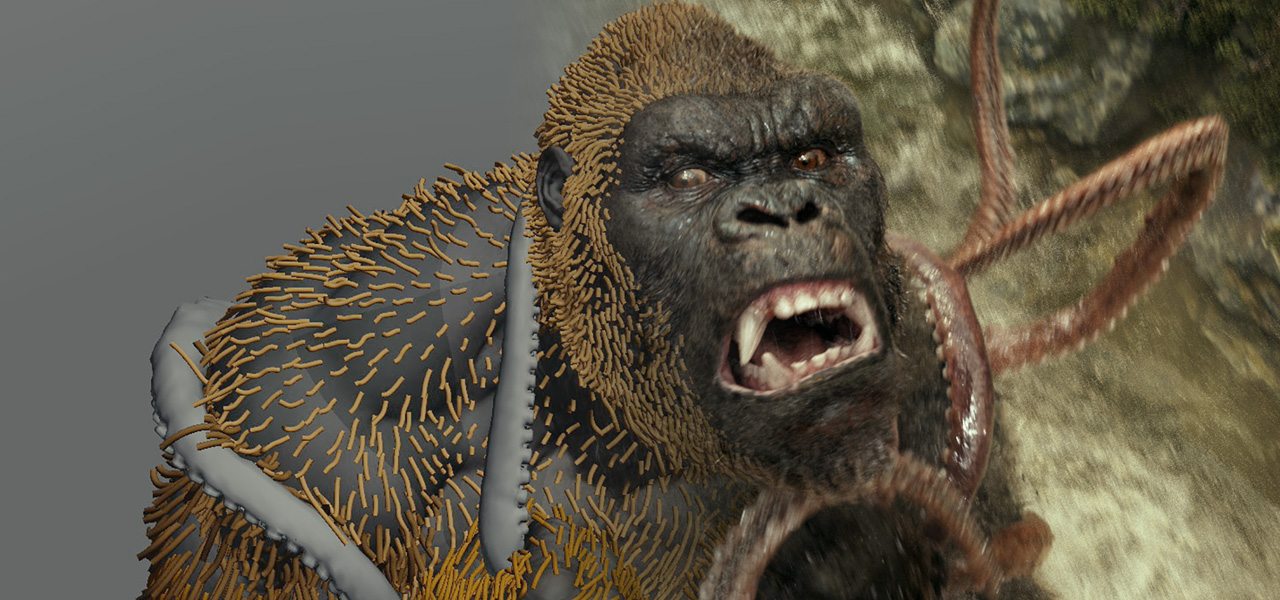
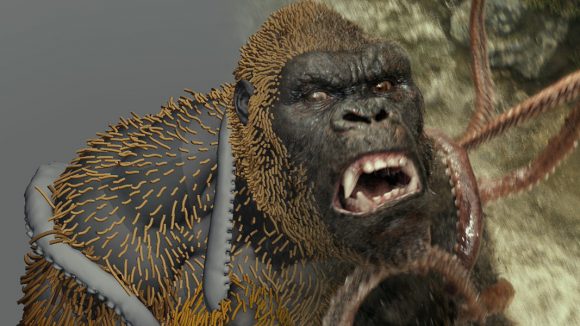
Why the Character Animation in ‘Kong: Skull Island’ Was Done Differently Than You Think
We’ve seen King Kong on film before – several times – but not like this.
In past outings, the famous ape has been achieved with stop motion, full and partial scale animatronics, and via motion capture and cg. But in Jordan Vogt-Roberts’ new Kong: Skull Island, Kong is a 100-foot-tall keyframed cg creature with very specific design features.
That meant the visual effects team, led by Industrial Light & Magic, had to make very specific decisions about its approach to character animation in the film. Motion or facial capture would be tested, but not ultimately employed. Throw-backs to the old-school Kong effects achieved with stop motion would be looked to, but any notion that Kong be a gorilla was ignored. And new and interesting friends and foes for Kong would have to be built and animated.
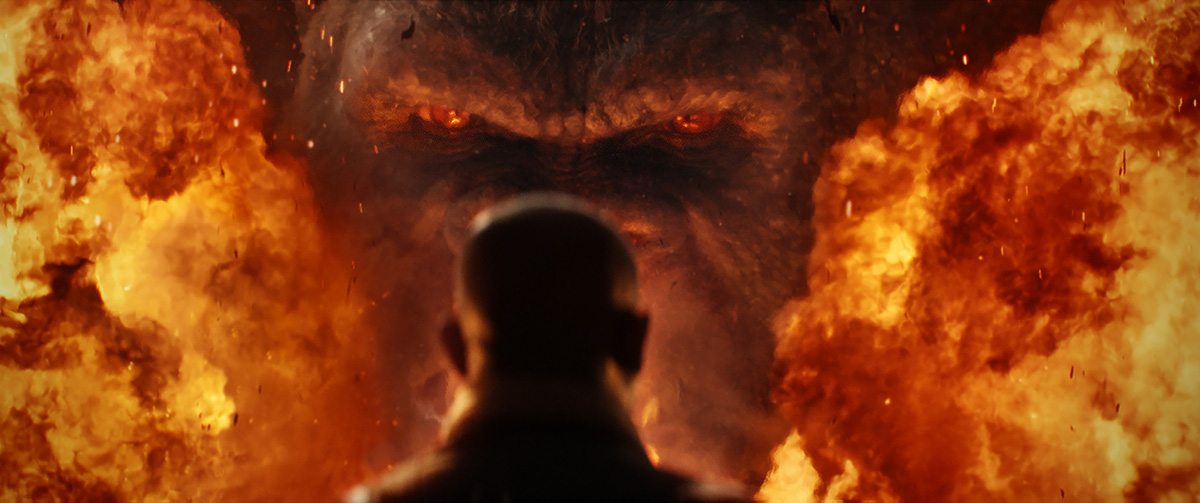
All these things of course might happen on any cg creature feature, but here ILM was dealing with visual effects history – and Kong has a rich one. Cartoon Brew finds out from ILM animation supervisor Scott Benza, who worked with senior visual effects supervisor Stephen Rosenbaum and ILM visual effects supervisor Jeff White on the film, just what those character animation decisions were. And we get a perspective on what was done in animation during previs and postvis from The Third Floor’s Mark Nelson.
King Kong is not a gorilla
Tasked with bringing Kong to life, ILM embarked on a reference-gathering exercise. That included, says Benza, “as many different primate videos as we could get our hands on.” But after some early meetings with the director, the studio realized a different direction was required. Vogt-Roberts did not want Kong to be a classic ape, or a gorilla, at all.
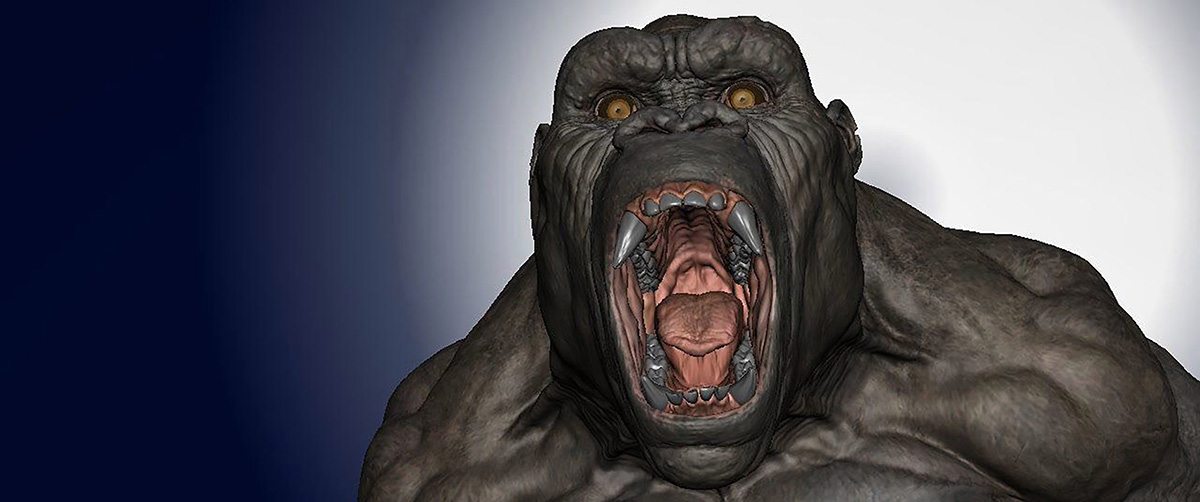
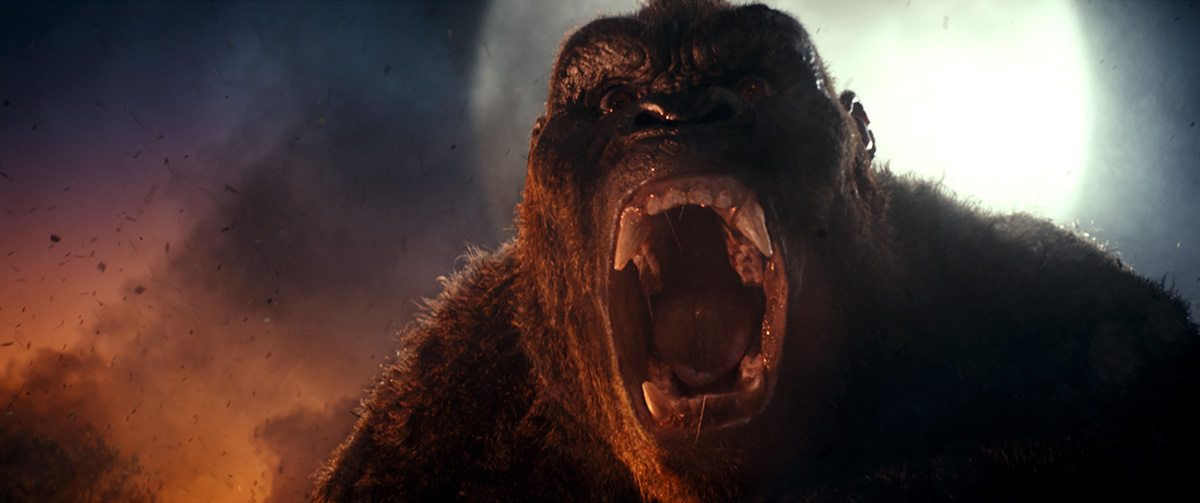
“It was instead meant to be an evolutionary off-shoot between a gorilla and a man,” said Benza. “Almost Neanderthal in a strange way. He was going to spend little to no time on all fours and in the majority of the movie he would be bipedal, walking upright.”
Kong’s final appearance also threw back to the original 1933 film which, because of the use of a stop motion model made with actual rabbit fur, had a very particular look, partly from technical restrictions of the day. The tattered hair of that era was something that could be achieved with a cg groom, but what Benza describes as the ‘wide-eye’ look of the ’33 Kong when he roars was something trickier to achieve.
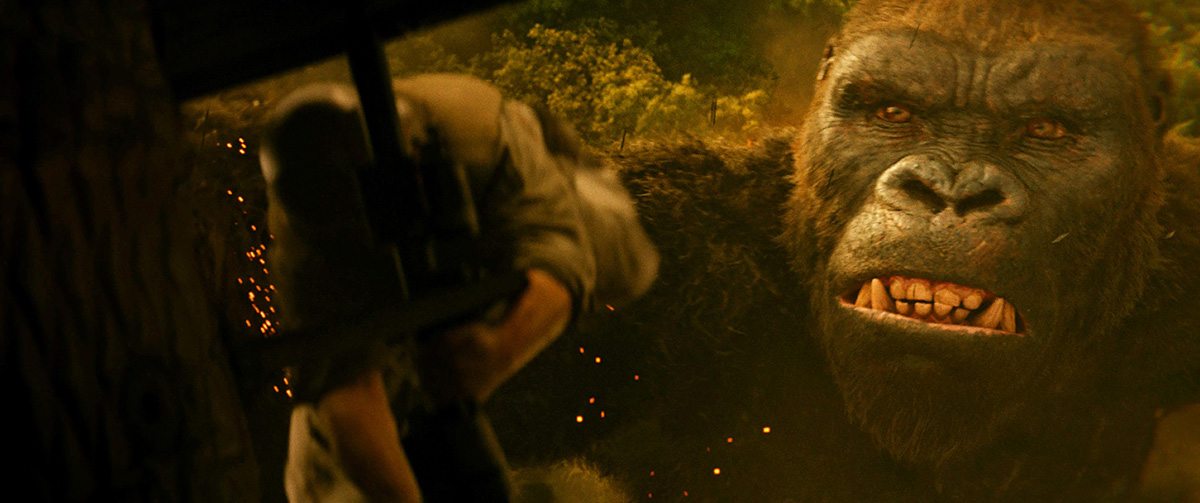
“When he roars, our instinct was to scrunch his face as tight as we could in the eye areas and get that mouth open as wide as we could, like we see in a lot of nature footage of gorillas,” noted Benza. “But actually the director wanted us to do the opposite of that – so we are roaring with his mouth wide open but keeping the eyes as wide as we could go and have the sclera totally present during those roars, which almost made him seem maniacal. That was directly from the 1933 Kong.”
Kong is not motion captured
Andy Serkis famously performed the role of Kong in Peter Jackson’s 2005 film, fresh from his memorable motion capture work as Gollum in the Lord of the Rings films. You might think that mocap would be well suited for Kong: Skull Island’s more bipedal creature, but, again, that wasn’t the approach Vogt-Roberts or ILM took to animating their Kong.
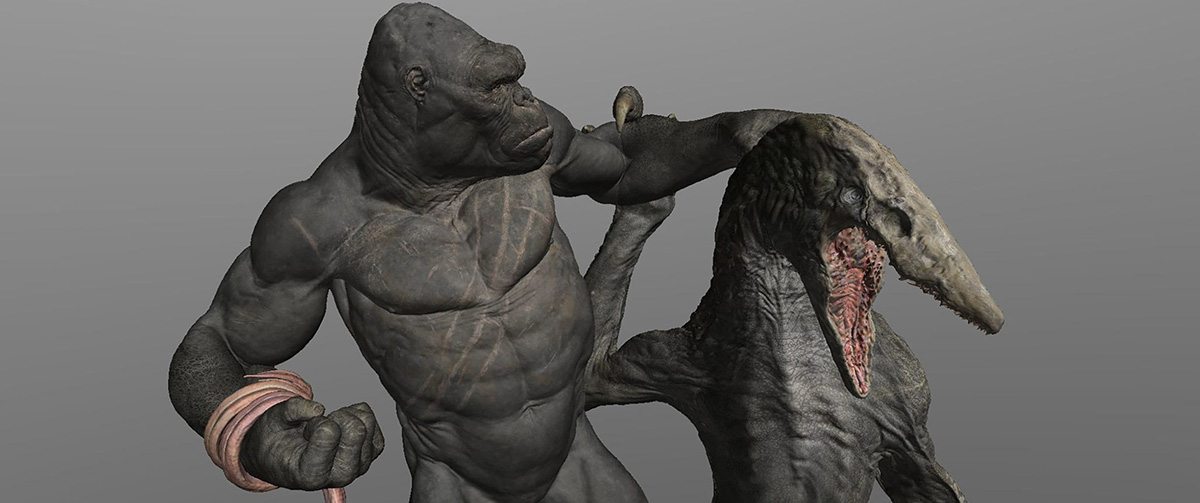
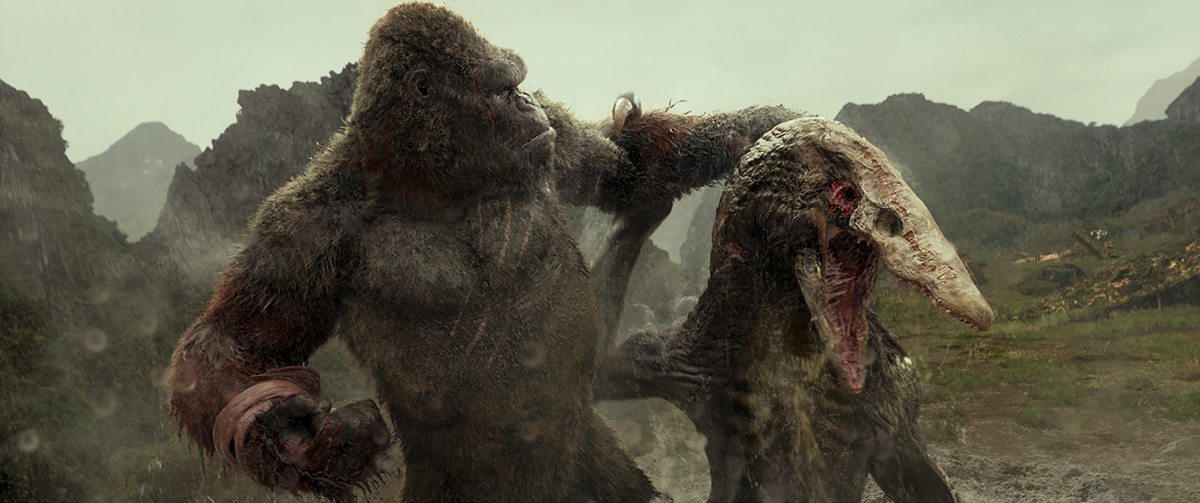
Still, the use of mocap and facial capture was explored. Performance specialist Terry Notary, who has done significant consulting on the re-booted Planet of the Apes films, was employed for a performance capture session for full-body movement, while actor Toby Kebbell (who had a key role in Dawn of the Planet of the Apes and also appears in Skull Island as a soldier) carried out some facial studies.
These sessions did inform the final animation, but Vogt-Roberts remained convinced that keyframing would deliver the best results. “We even did some side-by-side comparisons where we did a keyframe approach to a test shot at the beginning of production and went down and shot mocap of that exact performance,” said Benza. “And when we showed the mocap performance plugged in, the director’s immediate reaction was, ‘Wait a minute, what happened to the performance that was in here before that we were happy with?’”
How to animate a 100-foot-tall creature
Kong is tall – really tall. That meant ILM had to walk the line of believability and entertainment. “With a character that’s 100 feet tall, if it was actually moving in a way that was physically plausible, it would be a very slow-moving kind of uninteresting thing to look at,” said Benza. “If Kong was really close to camera we felt like we could get away with a faster moving performance. There’s a scene at the beginning of the movie where he’s coming up over a ridge and all you see is a giant hand close to camera. He reaches up and plants his hand, and it’s probably moving at 80 or 90 miles an hour, but given the scale of it and the fact you only see the hand, we found that you could get away with that speed.”
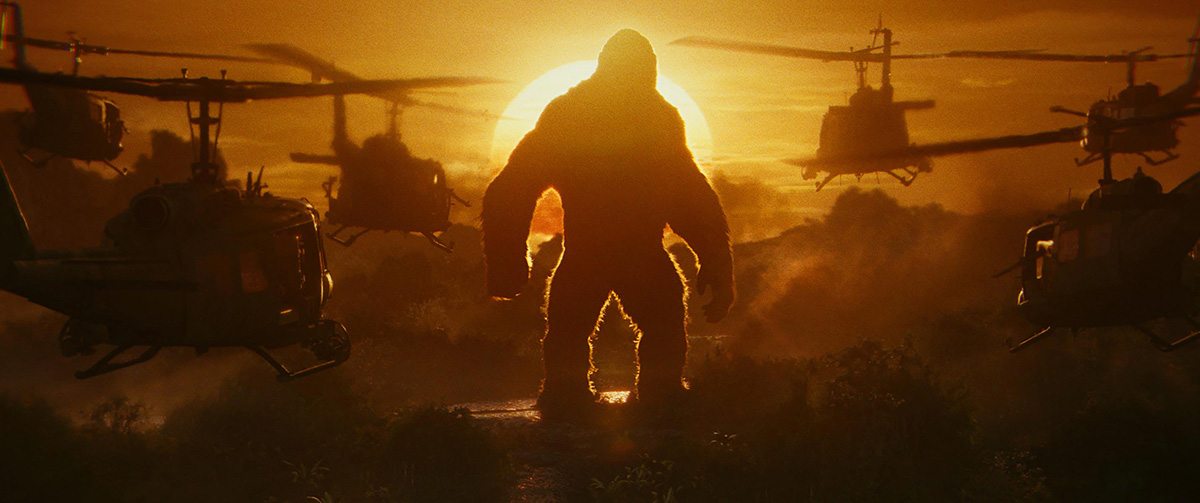
In wider shots, however, where Kong’s whole body was revealed, the creature’s speed was dialed down. Benza says that’s because audiences are so used to seeing heavy objects in motion that take a long time to change direction. “Say he was jumping down from a large altitude, for instance, we would really need to sell the compression and give a place and time for all of that mass to go and be absorbed before it could resolve itself and go a different direction.”
Then there was Kong’s face. Many shots zoomed on the creature’s enormous facial features, which ILM animated from a library of between 100 and 200 custom-sculpted facial shapes in a relatively traditional keyframe way, as Benza explains. “Everything was done using a reference of a performer or animators acting things out for themselves as reference or in the mirror where we would see how the muscles fire, where the majority of the movement was coming from, and where that emotion is being derived from.”
Animation of Kong during the previs stage was equally important
The Third Floor was one of the previs studios on Kong: Skull Island and helped visualize several key scenes (as well as carry out postvis for others). Halon Entertainment was also on the show. Using a cg model of Kong from ILM, the previs and postvis team from The Third Floor could actually block out shots a lot more accurately and that would closely resemble a final shot, although without fur and final effects.
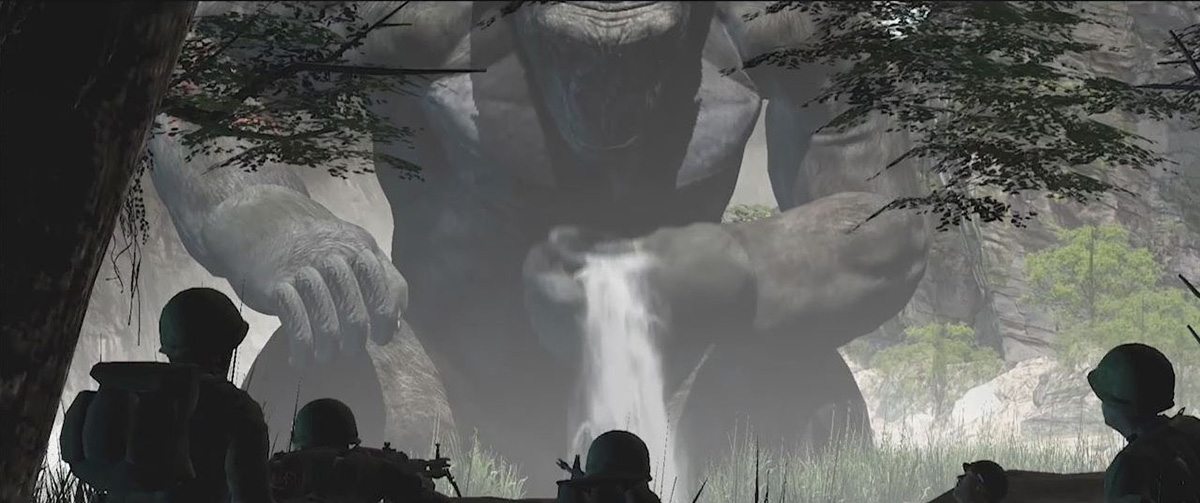
“In terms of the animation,” noted Third Floor previs supervisor Mark Nelson, “the senior visual effects supervisor, Stephen Rosenbaum, really wanted us to get as close as possible to what the general feel of Kong’s animation would be, as it would inform everything from cameras to effects to acting on set on the day of the shoot. So we spent a good deal of time working out how fast he would move, how upright he would walk and how he would fight – all keeping in mind that he is 100 feet tall, so the speed needed to reflect that. Too fast and he would look small, too slow and the action wouldn’t be that exciting.”
Kong is not alone: Crafting the skullcrawlers
As the movie proceeds, audiences are introduced to relatively small – but infinitely evil – creatures from the depths of Skull Island known as skullcrawlers. Eventually, a giant skullcrawler emerges for a one-on-one battle to the death with Kong.
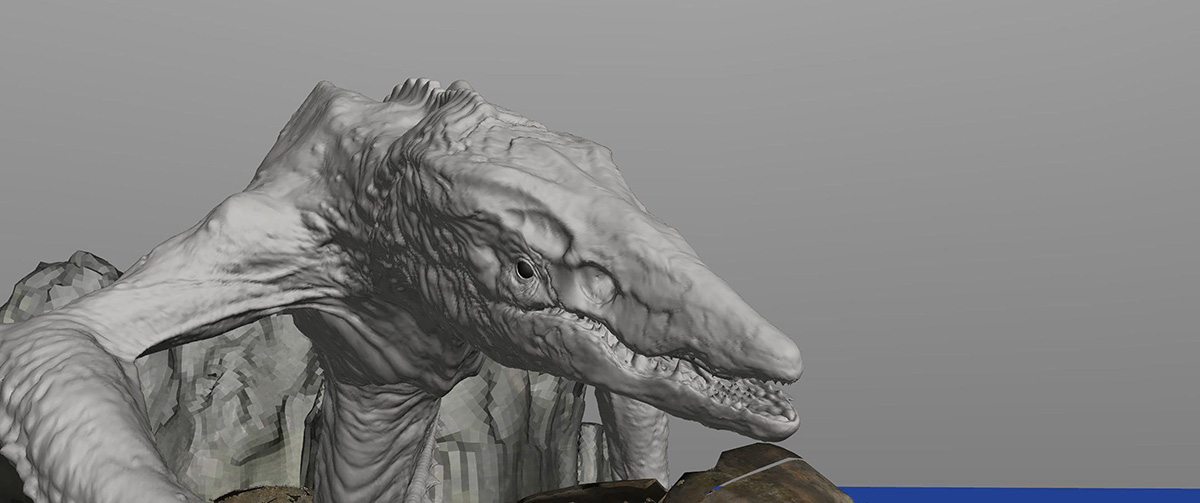
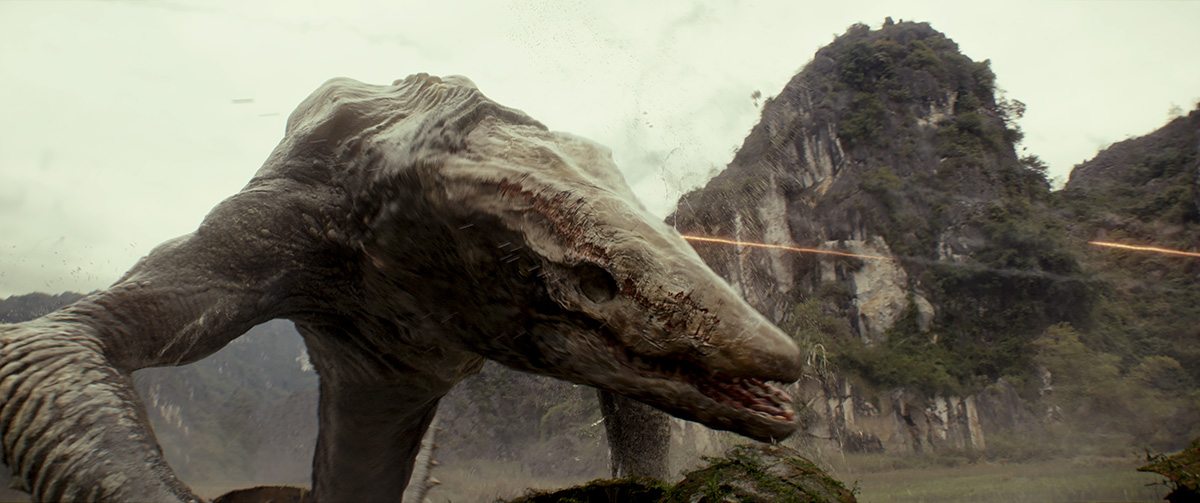
Again, previs helped establish the skullcrawler scenes, and help during filming. “We spent many hours on a walk-and-run cycle for the creature to explore how it would move,” said Nelson. “We also relied a lot upon concept art and maquettes that the director liked to guide us on the animation in the previs.”
The unusually shaped monster, with two legs and a tail, proved to be a challenging vfx assignment for ILM, partly because of one of Vogt-Robert’s design mandates. “The character design on this film was interesting in that the director, right from the onset, asked for his designers to make the creatures so that ten-year-olds would be able to draw these characters,” said Benza. “Meaning, that their silhouette and their character design would be so distinct that even somebody that couldn’t draw or would draw in a very basic fashion would draw things in a way that would be recognizable to their friends.”
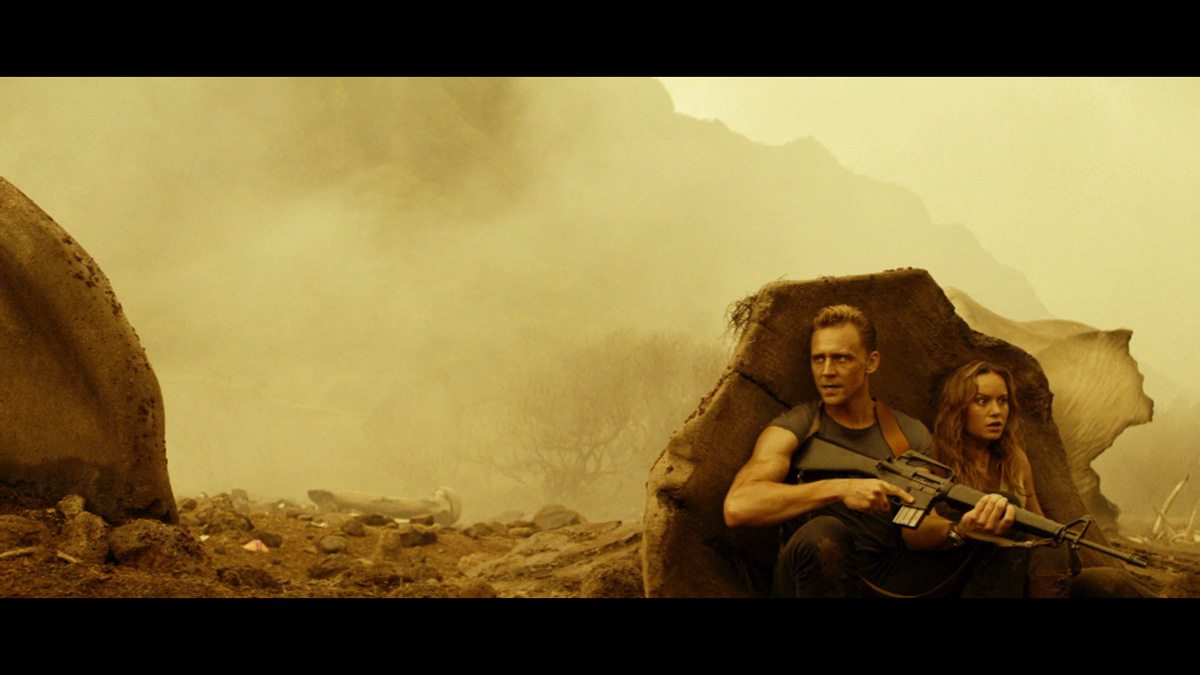
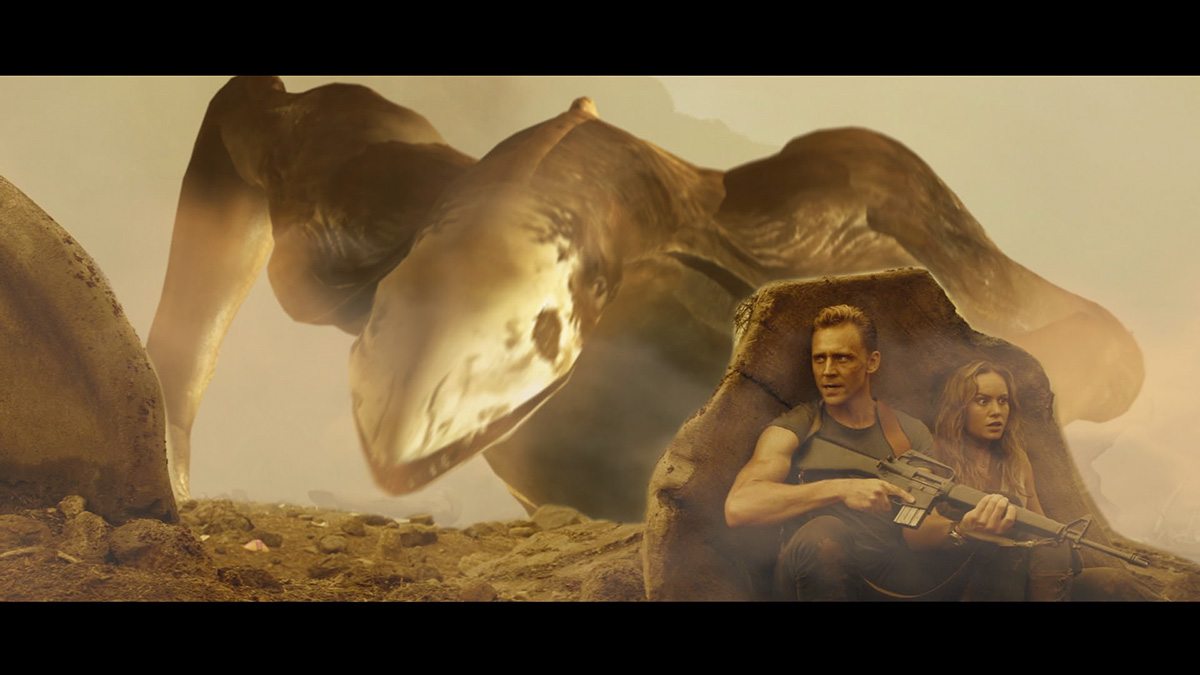
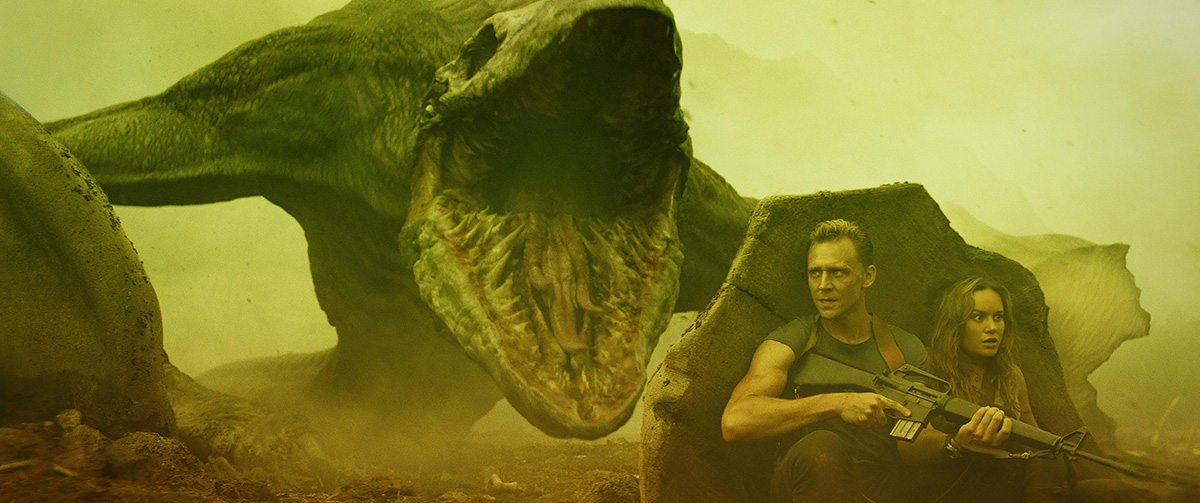
“The skullcrawler is probably the best example of that,” added Benza, “in that it’s a very unique character design. You could spot it from anywhere in the film and then if you saw a sketch of that creature somewhere else you’d recognize it as something that you’ve seen before.”
To work out how the oddly-proportioned skullcrawler should move, ILM explored using the tail for locomotion and balance – “like a third limb,” notes Benza – as well as for a weapon during attacks. “What we ended up with was this serpentine style snake movement when it’s moving forward and then taking advantage of the tail as much as possible in the third act fight where it’s grabbing onto Kong as much as it can, trying to choke him and using it for leverage.”
ILM also looked to the iguana, Komodo dragon, and mammals with long necks for reference for the skullcrawlers. Footage of deer which were on their sides or backs and used a thrust of their heads as momentum to right themselves proved incredibly useful. “We used that in the scene where the skullcrawler gets knocked on its side after getting hit in the face with the wood tree trunk.”
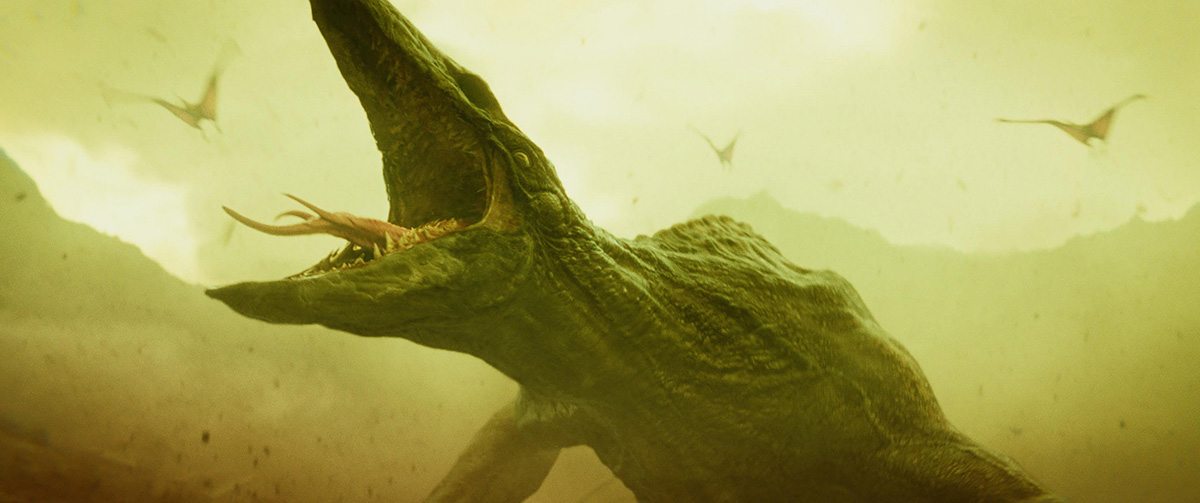
In a particularly dramatic sequence involving the skullcrawlers, the characters navigate through a boneyard and are preyed upon by the creatures. The Third Floor carried out both previs and postvis for the scene. “As a place, the Boneyard was very interesting because it was stark and colorless, but still had to look brooding and dangerous,” said Nelson. “Within the previs, we needed to create a sense of mystery where you could only see a few feet in every direction. This included making sure the smoke and atmosphere looked faded away and not like a solid textured wall, which was challenging to do in previs.”
When all there is to eat is a giant octopus
At one point, Kong is observed hunting, and then being attacked by a giant octopus. Octopus-like creatures have been realized many times as cg creatures before, but Benza says they are always difficult. “It’s something that doesn’t have a bone structure, it can have variable length or size, and it can move in any direction. Creature riggers love to know the answers to those questions, so that was tough.”
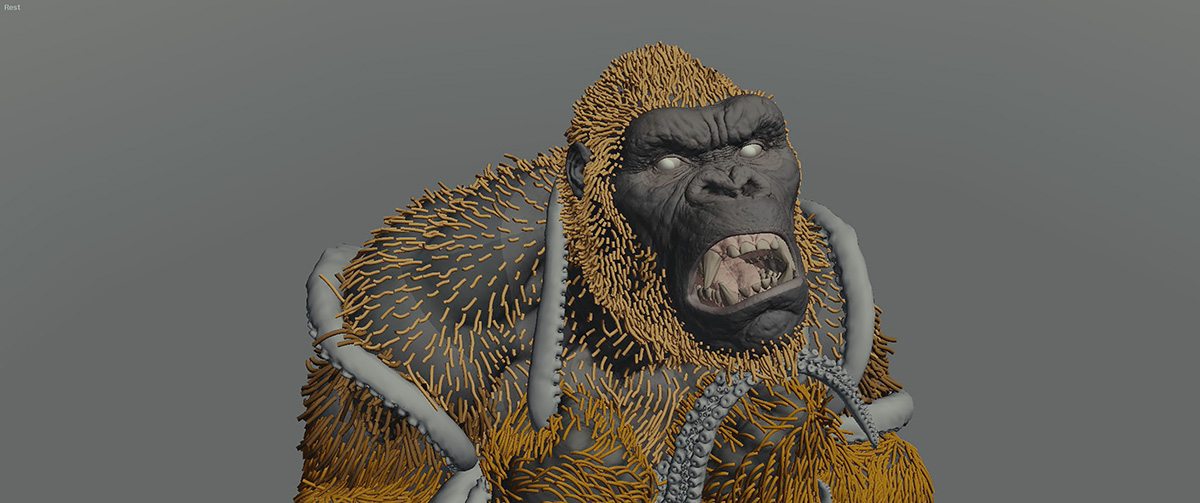
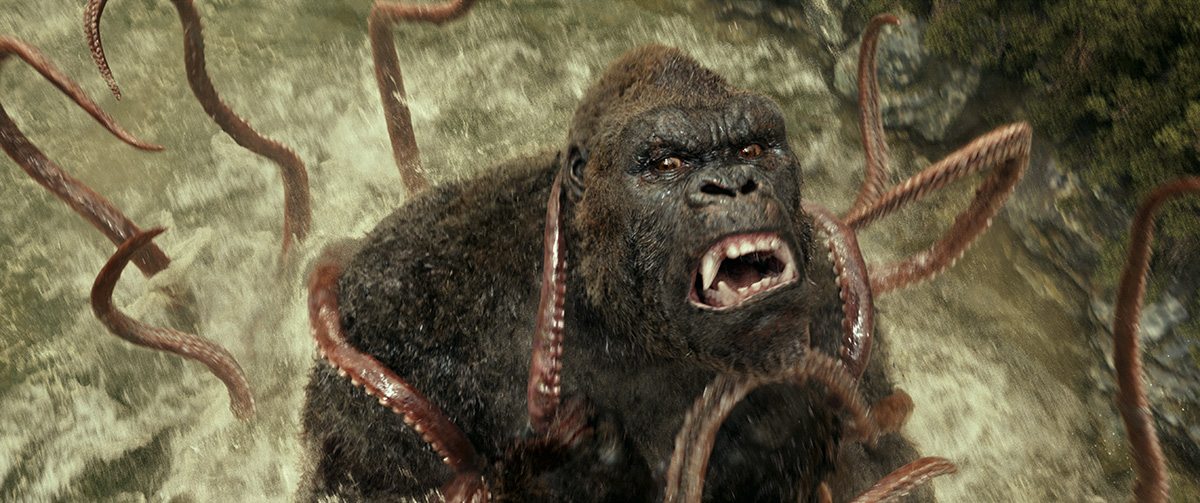
Another level of complexity came from the fact that although it appeared the giant octopus had eight tentacles, additional ones were ‘art directed’ into the scene where the director thought they would add extra effect. “What also added to the challenging nature of the shots,” said Benza, “was that after Kong finally gets a hold of this meal he actually swallows it down his throat. It was one of the first shots we started on the production and one of the last shots to finish when we were close up on him eating that tentacle.”
Giant spiders are real, and they want to kill you
Another size-defying creature on the island is a giant spider, initially camouflaged amongst a growth of bamboo. Here, the challenge for the visual effects team rested not only in the animation but also the point of view of the characters, and therefore camera. “That was something used throughout where we had wanted the film to be shot from a human perspective as though we were in the group of humans travelling the island,” said Benza. “Not everything but most things are shot from that POV, and it helps you feel like you’re there involved with the scenes and experiencing what the actors in the scenes are going through.”
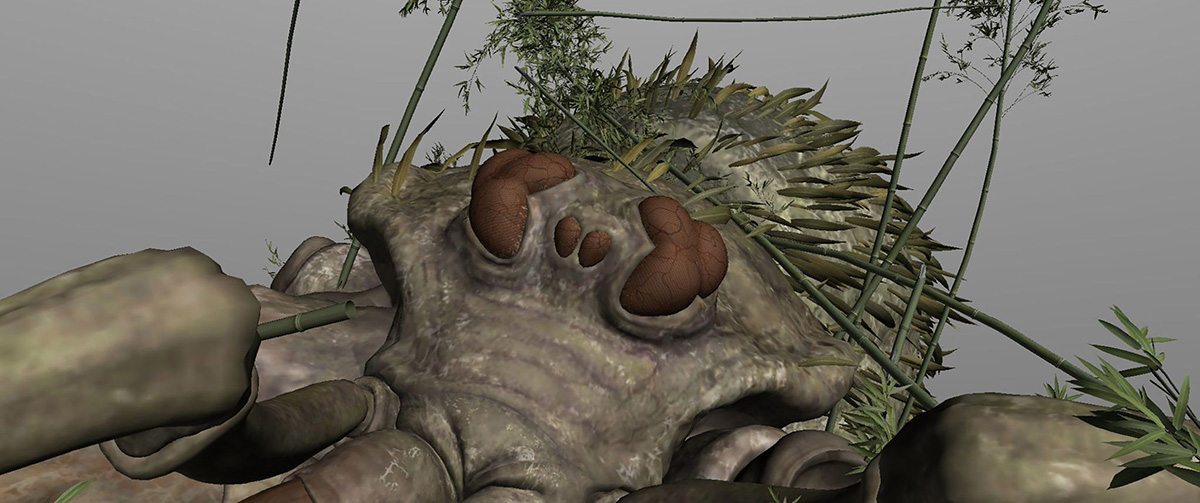
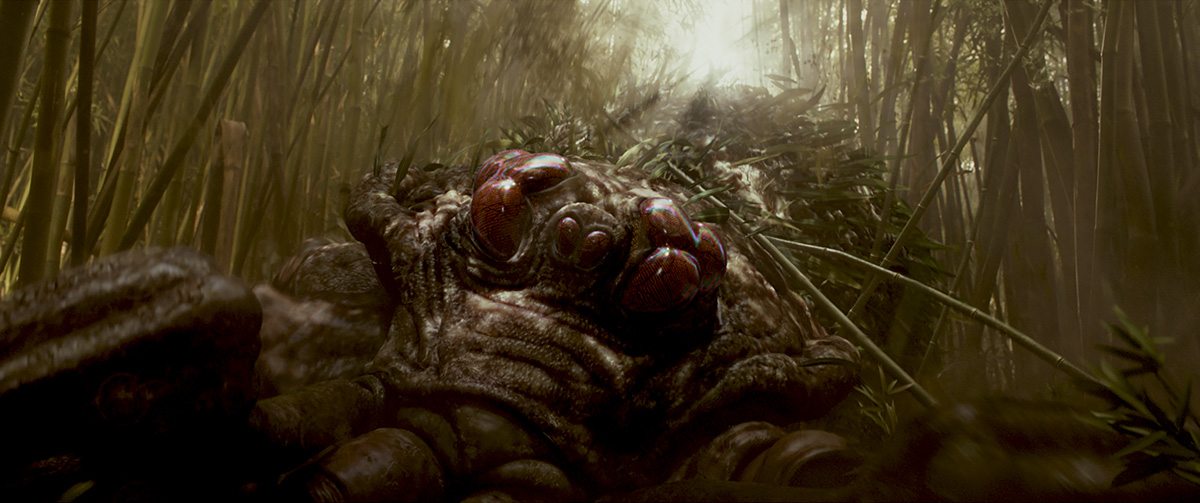
“For this particular character,” continued Benza, “it did help us to be able to be looking up at it for the majority of the scenes that it’s in because of the way the action is staged. The threat is always above them and the good guys in the scene are directly below them, so we didn’t want to have shots looking straight down at the action. So just by the nature of getting coverage for the scene, the layout of the scene dictated that we’d be looking up most of the time and it did prove to be a scarier POV and helped the scene in the end.”
The peaceful side of Skull Island
Not all the creatures featured in the film are cold-hard killers. Kebbell’s character encounters a giant stick insect-like monster, while a massive water buffalo is also one of the featured beasts. Its initial point of difference is that it lived underwater, a fact that enabled the visual effects team to reveal it in a particular scene.
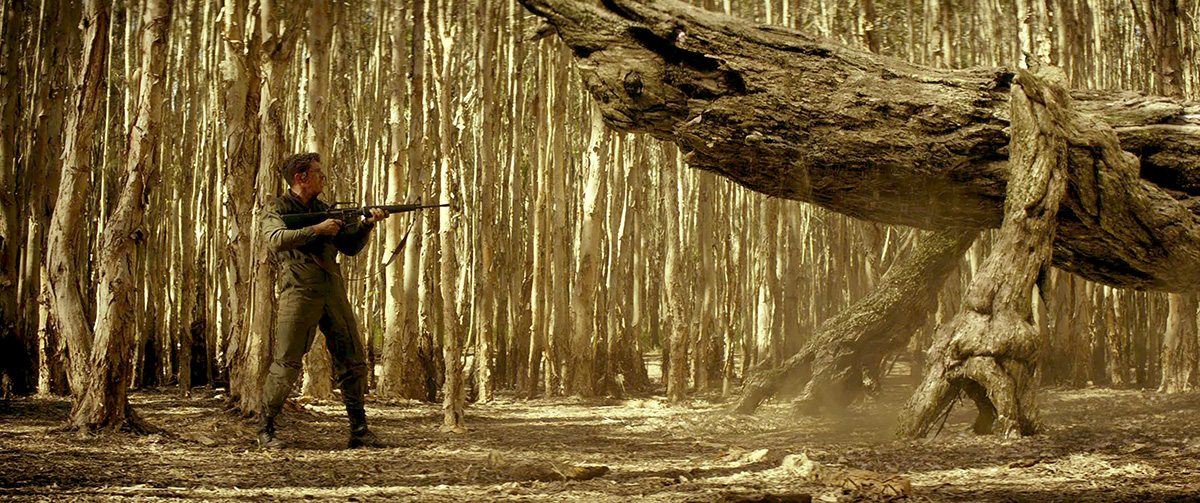
“The water buffalo was hard just from its size and starting under water,” said Benza. “The tip of its horn was probably thirty feet away from the head, and if he moves his head just a couple of degrees, once you get to the tip of that horn thirty feet away, a couple of degrees moving on its head translates to fifty miles an hour, which doesn’t play very well at all with water sims. So we constantly had to show or at least pass our work in progress down the line to the effects technical directors who were running water sims on the character for that scene to make sure that the motion we were doing in animation wasn’t disrupting the water sim.”
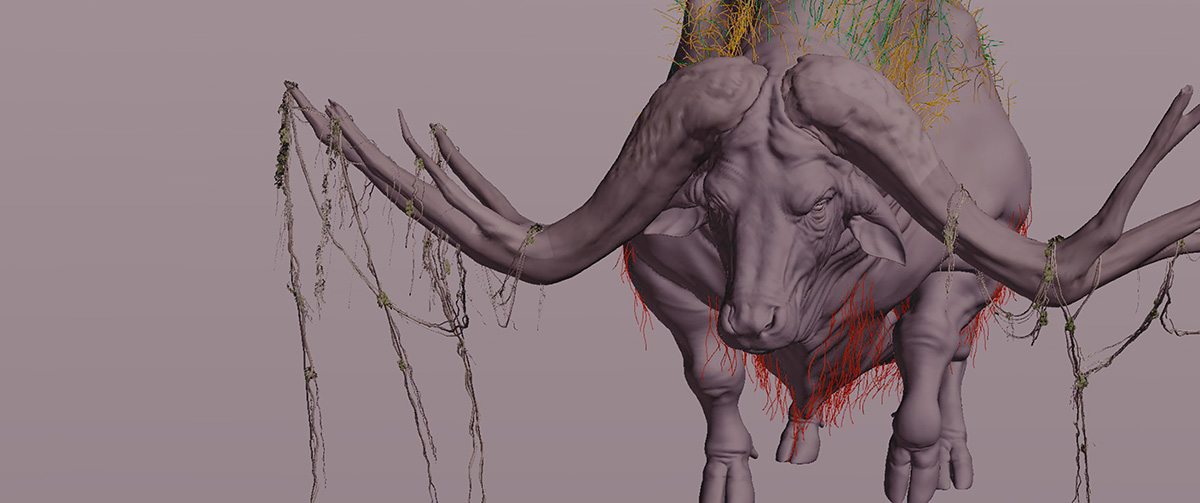
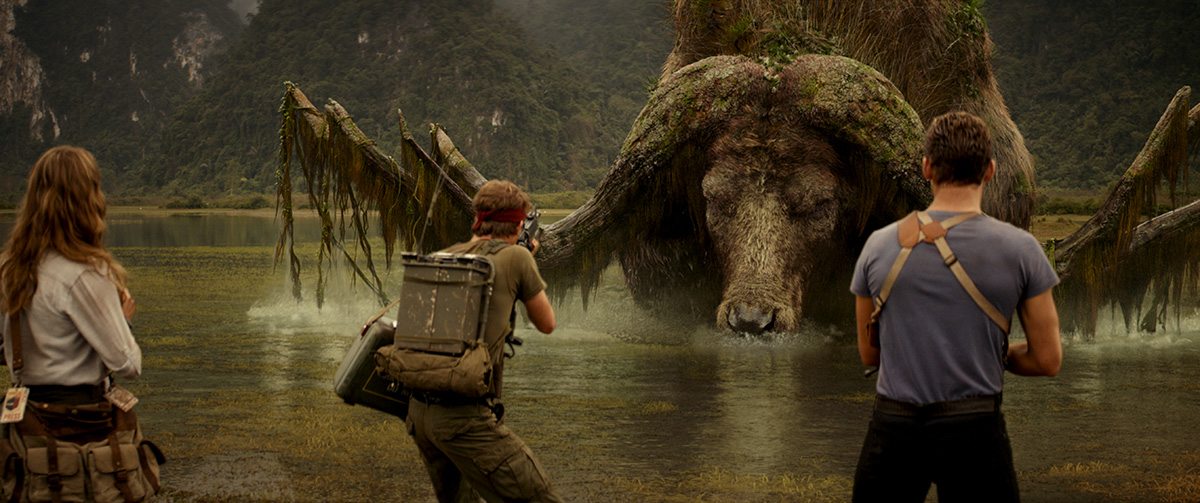
The calmness of the creature also defined the animation. Real water buffalo were of course referenced, and ILM maintained a very passive feel for the harmless creature. “I’m not sure what it gets up to during the rest of its time on the island, but the scene that he’s featured in is just kind of an eye-to-eye contact scene with our lead character and then he kind of goes about its business,” outlined Benza.
More Kong, more creatures
The film officially sets the scene for what appears to be a giant monster movie franchise – specifically a meeting between Kong and Godzilla. That showdown has a planned 2020 release date, plenty of time to consider what the next set of character design and animation decisions will be.

.png)